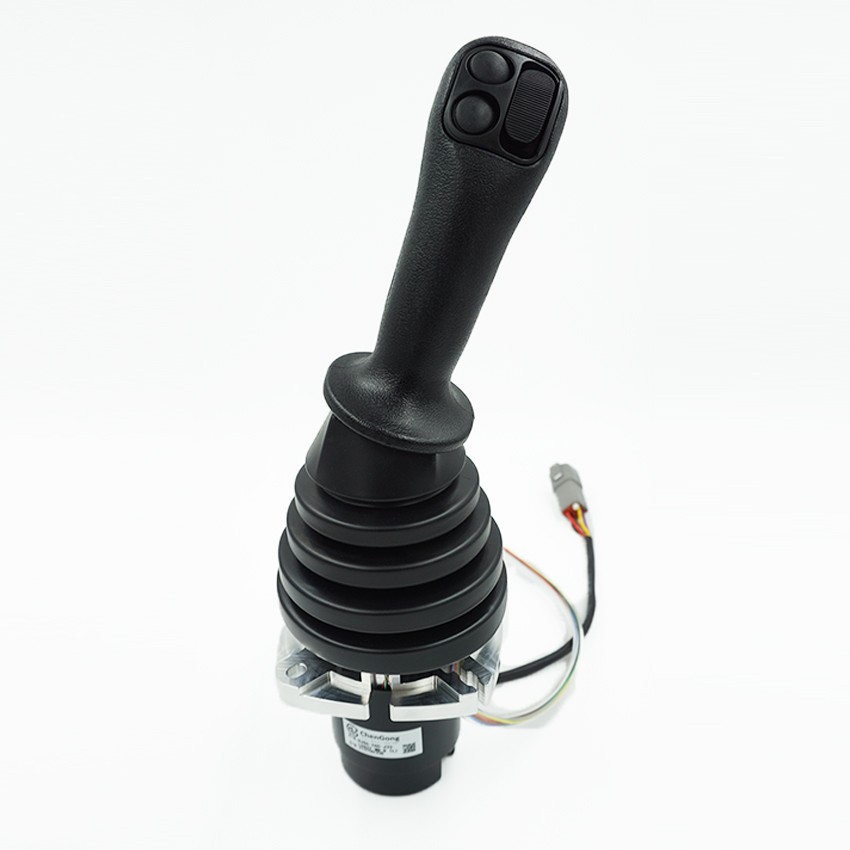Multi-axis joysticks are vital components in various high-tech applications, ranging from machinery and robotics to gaming and aviation control systems. Their design allows for movement along multiple axes, providing users with enhanced control and precision. Understanding the working principle of these joysticks can shed light on their significance in modern technology.

Basic Structure
At its core, a multi-axis joystick consists of a handle mounted on a pivot point, allowing it to move in various directions. Each motion corresponds to a specific axis, typically referred to as X, Y, and sometimes Z axes. Depending on the configuration, a joystick can control two-dimensional motion (X and Y) or three-dimensional motion (adding Z). The handle’s motion is translated into electrical signals, which are then sent to the connected device, enabling precise control.
Sensor Technology
The heart of a multi-axis joystick lies in its sensor technology. Different types of sensors can be used, including potentiometers, optical sensors, and Hall effect sensors. Potentiometers are frequently used in traditional designs. When the joystick is moved, the potentiometer varies its resistance, generating a voltage signal that corresponds to the angle of the joystick’s movement.
In contrast, Hall effect sensors provide a more durable and longer-lasting solution. These sensors detect the position of a magnetic field generated by the movement of the joystick handle. This method offers higher precision and reliability, making Hall effect sensors a preferred choice in many applications.
Movement Detection
As the joystick is manipulated, various components detect the movement. The movement of the handle causes the attached sensors to change their output signals. For example, if the joystick is pushed forward, the X-axis sensor detects this shift, sending a signal indicating the new position. Concurrently, any movement sideways would be captured by the Y-axis sensor. The system continually processes these signals, allowing for real-time control of connected systems or devices.
Output Signals
The output from a multi-axis joystick can take various forms, including analog and digital signals. Analog outputs provide continuous feedback based on the joystick’s position, suitable for applications requiring nuanced control, such as in flight simulation or industrial robotics. Digital outputs are typically used in systems that require specific discrete commands, like triggering specific actions in gaming consoles.
Applications in Industry
Multi-axis joysticks are prevalent across multiple industries, thanks to their versatility. In construction, they control heavy machinery such as cranes and excavators, enabling operators to perform tasks with exceptional precision. In gaming, these joysticks enhance the user experience by providing intuitive controls that translate hand movements into on-screen actions. In aviation, they allow pilots to maneuver aircraft with accuracy, ensuring safety and operational efficiency.
Importance of Customization
Manufacturers often customize multi-axis joysticks to meet specific operational requirements. This flexibility ensures that the joystick can adapt to various applications, whether it’s for industrial use or personal gaming. Features such as adjustable sensitivity, different handle shapes, and various grip options allow users to tailor the joystick to their preferences, enhancing overall usability.
The Heavy Equipment Joystick HJ86
Shanghai Chengong Electrical Control Co., Ltd. excels in producing high-quality joysticks, including their Heavy Equipment Joystick HJ86. This robust joystick features a heavy-duty handle designed to withstand high-strength operations, making it ideal for demanding environments. The joystick includes a spring that automatically resets for single-axis or dual-axis operations, ensuring it remains user-friendly even during extended use.
The HJ86 is equipped with a Hall sensor for angle detection, providing long service life and reliability. Its versatility is further enhanced by offering various output forms and optional upper handles. It operates smoothly with a rocking angle of ±20°, an automatic spring return mechanism, and starting and maximum operating forces of 20N and 11N, respectively. With a limiting force exceeding 300N and a weight of about 660g, this joystick is engineered to meet the robust demands of industrial applications.
The working principle of multi-axis joysticks showcases their incredible utility across many fields. With advancements in sensor technology and customization capabilities, these devices continue to play a pivotal role in enhancing control and precision. Companies like Shanghai Chengong Electrical Control Co., Ltd. demonstrate a commitment to quality and innovation, ensuring that products like the HJ86 joystick meet the evolving needs of industries worldwide.